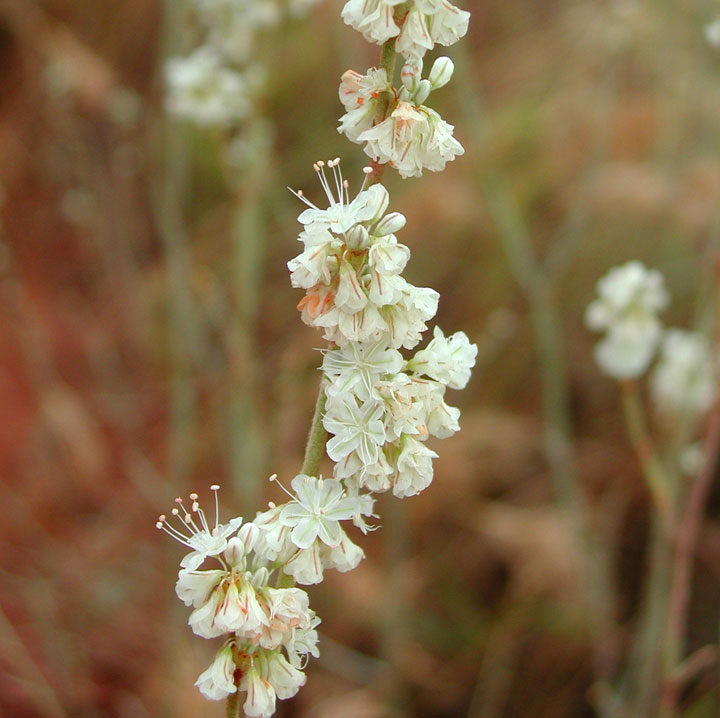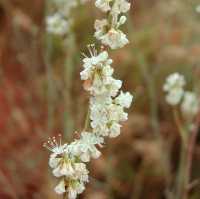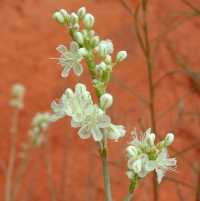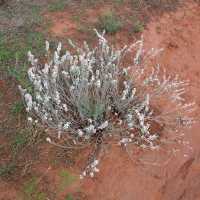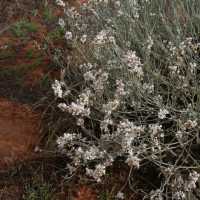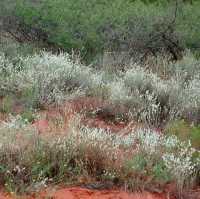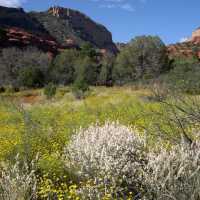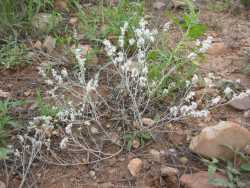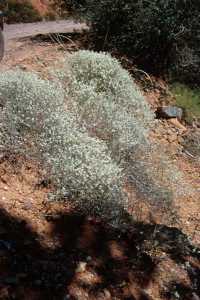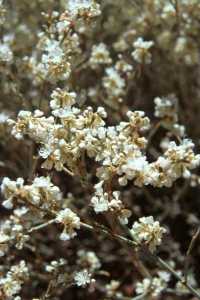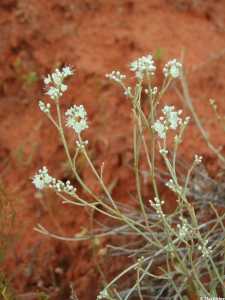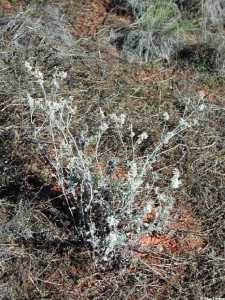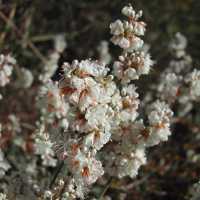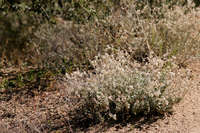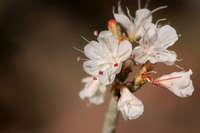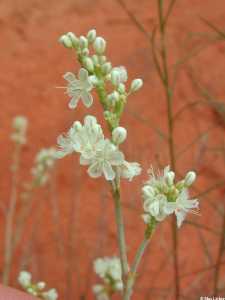Shrubs, subshrubs, or herbs, rarely scapose, (1-)1.5-10 × 1-15(-18) dm or, if matted, 0.1-2.5(-3) × 0.5-3(-5) dm, , lanate to thinly tomentose, or glabrous, grayish to greenish or reddish. Stems spreading to erect, with or without persistent leaf bases, up to 2 or more height of plant; caudex stems absent or spreading, occasionally matted; aerial flowering stems erect to spreading, stout to slender, solid, not fistulose, (0.1-)0.5-4(-6) dm, tomentose, floccose, or glabrous. Leaves basal and fasciculate in terminal tufts, or cauline and fasciculate, occasionally 1 per node; petiole 0.02-0.5(-1) cm, tomentose to floccose; blade oblanceolate to broadly elliptic, 0.1-3 × 0.1-1 cm, tomentose to floccose, sometimes subglabrous or glabrous and green adaxially, margins plane, sometimes revolute. Inflorescences virgate or cymose with involucres disposed at tips racemosely arranged involucres, rarely capitate, (1-)5-20 × (1-)10-40 cm; branches dichotomous, tomentose, floccose, or glabrous; bracts 3, triangular, scalelike, 0.5-3.5 mm. Peduncles absent. Involucres 1 per node, turbinate to narrowly campanulate, (0.7-)1-4 × 1-2.5 mm, tomentose, floccose, or glabrous; teeth 5, erect, 0.3-1 mm. Flowers 1-4 mm; perianth white to pink or rose, glabrous; tepals connate proximal 1/4, monomorphic, obovate; stamens exserted, 1.5-4 mm; filaments glabrous or sparsely pilose proximally. Achenes light brown to brown, (1-)1.5-3 mm, glabrous.
Eriogonum wrightii is subdivided into several varieties most of which are distinct, although a few have rather indistinct boundaries. Some of the variation has yet to be fully resolved, especially in the var. nodosum complex where, at least in Mexico, one additional expression remains to be named. A clear distinction between var. subscaposum and E. kennedyi is not possible in southern California (see discussion below). Nearly all of the varieties of E. wrightii are in cultivation, although the most elegant (var. olanchense) has yet to be so honored.
Few ethnobotanical uses of bastard-sage are reported in the literature. L. C. Wyman and S. K. Harris (1951) noted that the Kayenta Navajo use it (var. wrightii) as an emetic, while M. L. Zigmond (1981) stated that the Kawaiisu used the pounded seeds (probably of var. subscaposum) in a beverage or as a dry meal. Members of the species are food plants for the rare Rita dotted-blue butterfly (Euphilotes rita), the Pacific dotted-blue (E. enoptes), the veined blue (Plebeius neurona), and the Mormon metalmark (Apodemia mormo mormo).
Duration: Perennial
Nativity: Native
Lifeform: Subshrub
General: Perennial subshrub, shrub, or rarely scapose herb, 15-100 cm tall by 10-150 cm wide, or sometimes matted and less than 30 cm tall; stems spreading to erect, stout to slender, with or without peristent leaf bases; herbage lanate to thinly tomentose or glabrous, grayish to greenish or reddish.
Leaves: Almost always clustered in fascicles (sheaths), the fascicles located at the base of the plant and at branch tips, and sometimes along the stems; blades oblanceolate to broadly elliptic, 1-30 mm long by 1-10 mm wide, both surfaces tomentose to floccose, or occasionally the upper surface nearly glabrous.
Flowers: White to pink and arranged in clusters of a few short-stalked flowers held together by a cup-shaped structure called an involucre. Involucres arranged in racemes on wand-like branches, or sometimes arranged in cymes (flat-topped inflorescences); each individual flower is 1-4 mm high, with 6 ruffled petal-like tepals, these fused together at the base and white to pink or rose.
Fruits: Achenes light brown to brown, 1-3 mm long, glabrous.
Ecology: Found in dry, rocky soils on flats and slopes, from 3,000-7,000 ft (914-2134 m); flowers June-October.
Distribution: CA, NV, AZ, s UT, NM, s TX; south to n MEX.
Notes: A common, low-growing shrub that doesn't resemble many other species. It has thick, dark-brown woody branches at the base and smaller tomentose stems above, which are ascending or spreading and often form dense growth; leaves are gray-green and also covered with dense mats of white hairs; the leaves are in small bunches (fascicles) at the stem nodes; the white flowers arranged along semi-constricted inflorescences, these often erect or tucked into the rest of the foliage The species description encompasses a large amount of variation because there are 9 currently recognized varieties (according to Flora of North America, 2005). There are two varieties in Arizona and New Mexico, var. nodosum and var. wrightii. Var. nodosum is mostly found in the low deserts of southwestern Arizona and southeastern California, and can be told apart by gray-tomentose flowering stems and branches. Var. wrightii is found from southeast California to west Texas and has white-tomentose stems.
Ethnobotany: Seeds were pounded into a meal and drunk as a beverage, or even eaten dry; the plant also used as an emetic.
Etymology: Eriogonum is from the Greek erion, wool, and gony, knee, alluding to the hairy nodes of the first species described, E. tomentosum; wrightii is named for William Greenwood Wright (1831-1912) a California lepidopterist.
Synonyms: Eriogonum trachygonum subsp. wrightii
Editor: SBuckley 2010, FSCoburn 2015, AHazelton 2017


